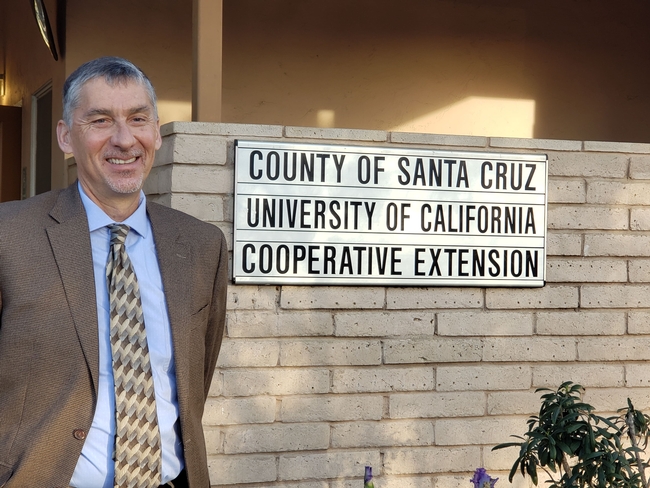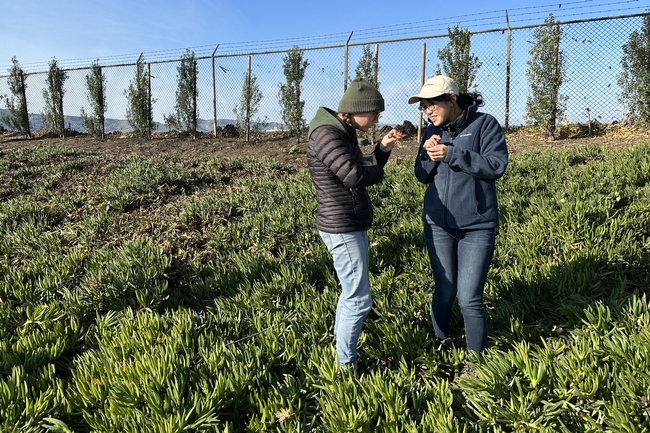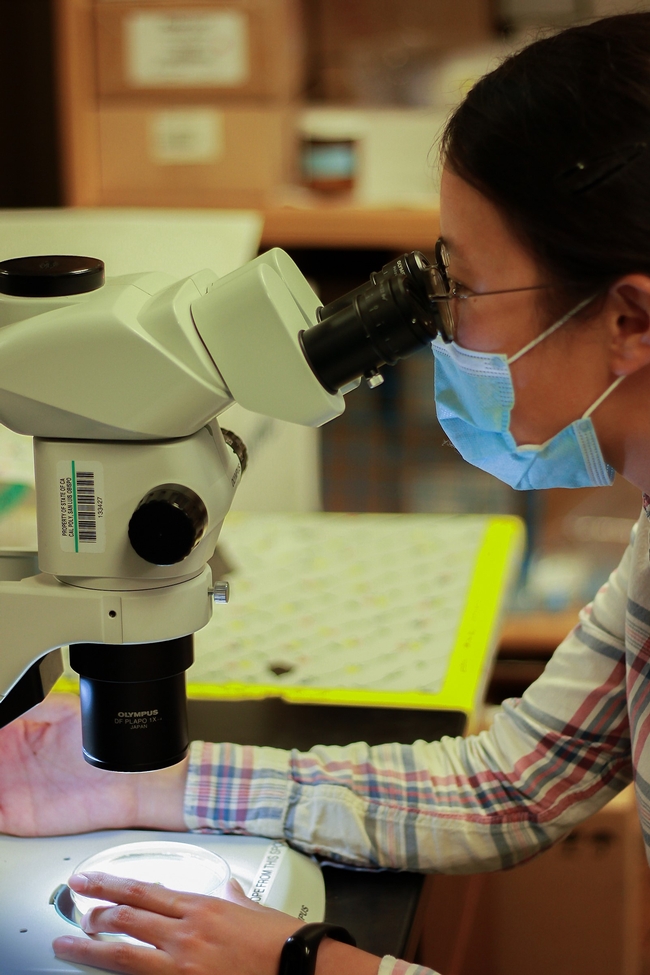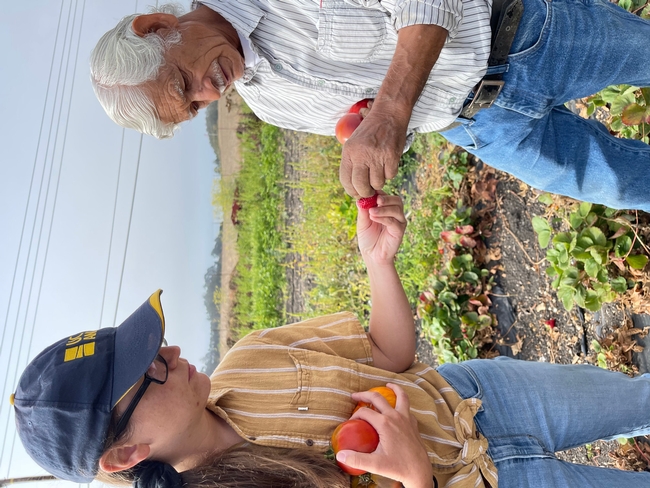
Posts Tagged: Monterey
Gonzalves begins as new UC Cooperative Extension director for Monterey, Santa Cruz and San Benito counties
David Gonzalves started on Feb. 1 as director for University of California Cooperative Extension in Monterey, San Benito and Santa Cruz counties. UC Cooperative Extension connects communities across California with UC research and science-based solutions through agriculture, natural resources, nutrition and 4-H youth development programs.
Responsible for the overall operation of UCCE educational and applied research programs in the region, Gonzalves also will build and expand partnerships with county and city governments, public agencies and community organizations.
“David brings tremendous expertise in administration, fostering strong relationships, and building effective teams,” said Deanne Meyer, interim associate vice president for programs and strategic initiatives at UC Agriculture and Natural Resources, which administers UCCE statewide. “His track record of engaging local agencies, business partners, stakeholders and community groups will be invaluable as we explore new collaborations to reach and serve more Californians.”
Gonzalves was most recently a campus building official at UC Merced. Beginning his career at the County of Merced as a fire inspector, Gonzalves worked his way up to supervising building inspector and eventually assistant development services director. Then, for the City of Merced, he filled the role of chief building official and ultimately director of development services, leading the city's Building, Planning and Engineering teams. For three years, Gonzalves served as Tuolumne County's Community Resources Agency director.
“David's past experience as an administrator in county government and at UC Merced makes him the ideal candidate for the work we do at UCCE, as he has demonstrated success in being able to successfully negotiate these two worlds,” said Lynn Schmitt-McQuitty, interim director for county Cooperative Extension at UC ANR.
Gonzalves said he looks forward to meeting with county leaders, members of local boards, growers, UC Master Gardener volunteers, 4-H members and community members to learn how UC Cooperative Extension can help meet local needs.
“My big picture goal is to allow UCCE advisors, administrative teams and local county leaders to have a coordinated approach to our local challenges and successes,” Gonzalves said. “Our efforts will concentrate on freeing up our research teams' calendars to ensure they can continue producing cutting-edge accomplishments here in the tri-county area.”
Based at the UCCE Monterey County office in Salinas, Gonzalves can be reached at dgonzalves@ucanr.edu or (831) 392-5916.
New UCCE advisors bring fresh ideas to protect lettuce from INSV, Pythium wilt
Salinas Valley lettuce growers lost about $150 million in 2022 due to diseases
A stormy winter could portend another devastating year for the lettuce industry in the Salinas Valley, which saw approximately $150 million in lost gross revenue in 2022 due to INSV (impatiens necrotic spot virus) and associated diseases. Recent drenching rains might mean more weeds – overwintering “reservoirs” for the tiny insect, the Western flower thrips, that carries INSV.
Or the extreme precipitation could benefit growers, as thrips in the soil – during their intermediate stage of development – might be drowned in the waterlogged fields.
As with so many aspects of the INSV crisis, the ultimate effects of flooded fields on thrips populations remain unknown.
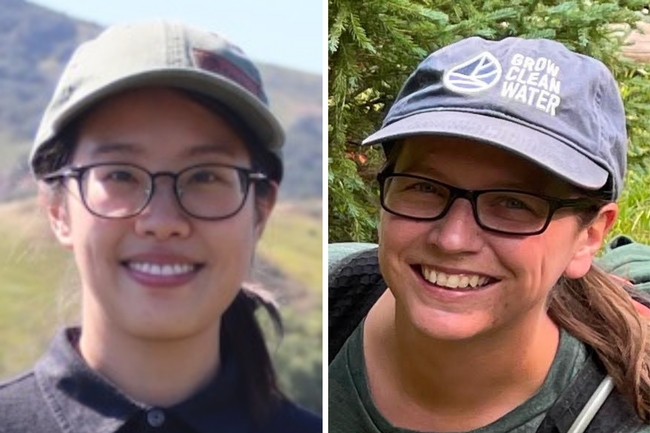
“We don't know if thrips are just so persistent and so stable in that pupal stage that maybe they will emerge unaffected,” said Kirsten Pearsons, University of California Cooperative Extension integrated pest management farm advisor for Santa Cruz, Monterey and San Benito counties. “There's just so much about their biology and ecology in the Salinas Valley that we just don't know.”
The mystery of thrips, INSV and soilborne diseases (namely Pythium wilt) is why UC Agriculture and Natural Resources assigned Pearsons to the area last November and hired Yu-Chen Wang in October as UCCE plant pathology advisor for the three counties.
“They're stepping in at a critical moment,” said Richard Smith, the region's UCCE vegetable crop production and weed science advisor who retired in January after a 37-year career. “They've gotten grants funded already – and that's just incredible. They're hitting the ground running.”
Experienced in disease diagnosis and collaboration with growers and industry partners, Wang said her pathology background – paired with Pearsons' entomology expertise – will be crucial in addressing INSV and other diseases.
“It is important for Kirsten and me to work together and provide different insights for the vector and the pathogen, respectively,” Wang said.
‘It's going to take everything to get a crop'
One priority is untangling the dynamics of INSV and Pythium wilt co-occurrence – the subject of ongoing research by JP Dundore-Arias, a plant pathologist at California State University, Monterey Bay. While the vegetables may tolerate one disease or the other, their one-two punch often deals the lethal blow.
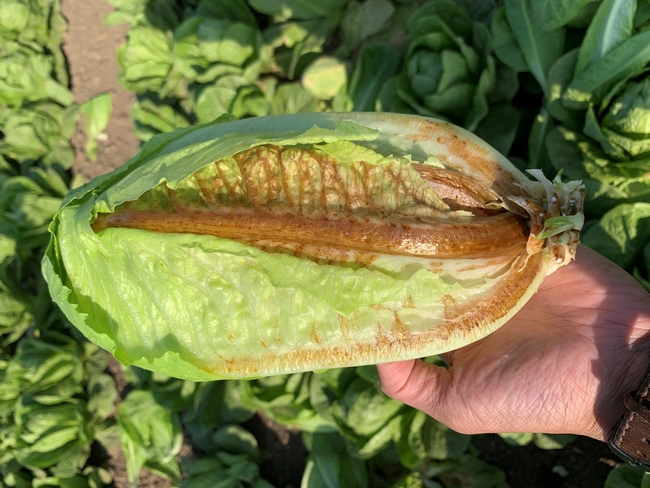
“The challenge is – which is why it's great to have Yu-Chen and Kirsten – is that we have so many problems now, whether it's Fusarium (wilt), or Verticillium (wilt), or Pythium, or INSV,” said Mark Mason, pest control adviser for Nature's Reward, which primarily grows lettuces on 5,000 acres across the Salinas Valley.
Mason said that co-infections on his crops (sometimes with three or four diagnosed diseases) make it difficult to assign monetary damages to a specific pathogen, but he noted he has seen fields with “100% loss.” According to the Grower-Shipper Association of Central California, about 11,500 acres were deemed not harvestable in 2022, representing 12% of lettuce industry acreage.
Given the gravity and complexity of the disease dilemma, Pearsons said she has been fielding calls from growers seeking new and better solutions – ways to improve existing tools, techniques borrowed from other crop systems, and additional biological or chemical means of control.
And although there are a couple of pesticides that manage the disease-carrying thrips reasonably well, growers and researchers are worried about their diminishing efficacy due to overuse. Plus, they only constitute a short-term fix.
“Managing the thrips will only reduce the amount of INSV that can get transmitted,” Pearsons explained. “You can kill 99.9% of the thrips, but you get one thrips that has INSV that enters a field, and now you have an infected lettuce plant. All of the thrips are going to come and they can spread it from there; pesticide slows things down, but it's not going to eliminate it.”
Finding disease-tolerant lettuce cultivars is a more sustainable approach. Trials conducted last year by Smith, Wang and others identified several varieties that appeared to hold up well to Pythium and INSV. While additional research could maximize their potential benefit, Wang said even the hardier cultivars will lose their resistance over time, and a multi-layered INSV strategy with “integrated management tools” is crucial.
“We realized, when this thing started happening, that we cannot spray our way out of this problem,” Mason said. “We need varieties; we need management practices; we need pesticides…it just seems like it's going to take everything to get a crop.”
Weeds key to disease control
An all-hands-on-deck approach helped control thrips-harboring weeds last winter. With fields drying out from January storms, Smith said communities must get back to weed management – with a focus on prominent weed hosts for INSV and neglected areas adjacent to farms. Hotspots of infection last year were traced to industrial lots that were overlooked during the weeding process.
“People can't lose sight of the fact that we still need to be controlling the weeds in key areas, because that's the reservoir of the virus during the winter,” Smith said. “We have to stay on task with that.”
Yet despite the diligent weed abatement, crop damage from INSV and Pythium was widespread in 2022, and Smith said it's “very possible” that high heat during the summer was a contributing factor to especially prevalent disease in fall. Thrips populations tend to thrive in warmer weather, Smith said, but much more research needs to be done to understand the basic biology of the insect, including how they acquire the virus and how they spread it.
High hopes for future
Pearsons cited the work of Daniel Hasegawa, a research entomologist with the U.S. Department of Agriculture, who leads teams in monitoring thrips populations in several locations across the Salinas Valley. Currently the counting of thrips on sticky card traps is done manually, but Pearsons and Mason mentioned the possibility of using AI and machine learning to expedite that process.
Mason said that the grower community is excited about the new technologies and ideas that Pearsons and Wang are bringing to the region. As a participant in the search for candidates to fill the advisor positions, Mason said “they were, in my opinion, by far the best fit for what we were looking for.”
“I hope they stay here for 30 years,” he added.
The new advisors both noted the palpable energy and cooperative spirit in the Salinas Valley to proactively meet the challenge.
“Looking to the past, there have been other outbreaks and diseases that they've managed to overcome,” Pearsons said. “These farmers are resilient and creative and I fully believe that lettuce will still be growing here for years to come – it might look a little different, and it might take a little bit of a painful period to get to that point, but I think that we're going to be able to come up with some solutions.”
And while there are concerns that some lettuce growers might decide to leave the region, Wang said she also believes in the industry's strong roots and rich history.
“Salinas Valley has had a beautiful climate for lettuce for so many years; there are some undeniable advantages here,” she said. “This is still the best place in the United States – and maybe the world – to grow lettuce.”
Name That Spider!
Name that spider! UC Davis professor Jason Bond is seeking a species name for a new genus of...
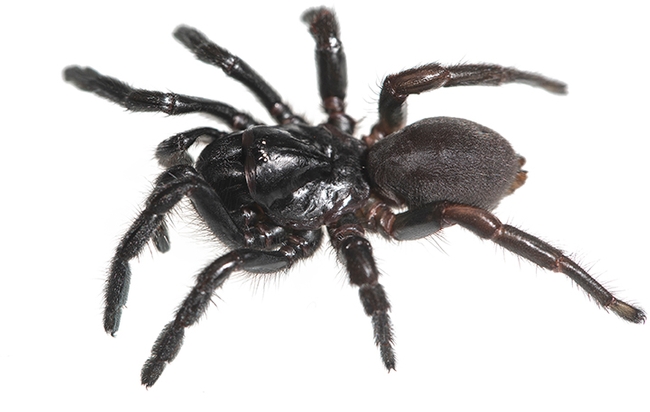
This is the female of the new genus, Cryptocteniza. (Image by Jason Bond)
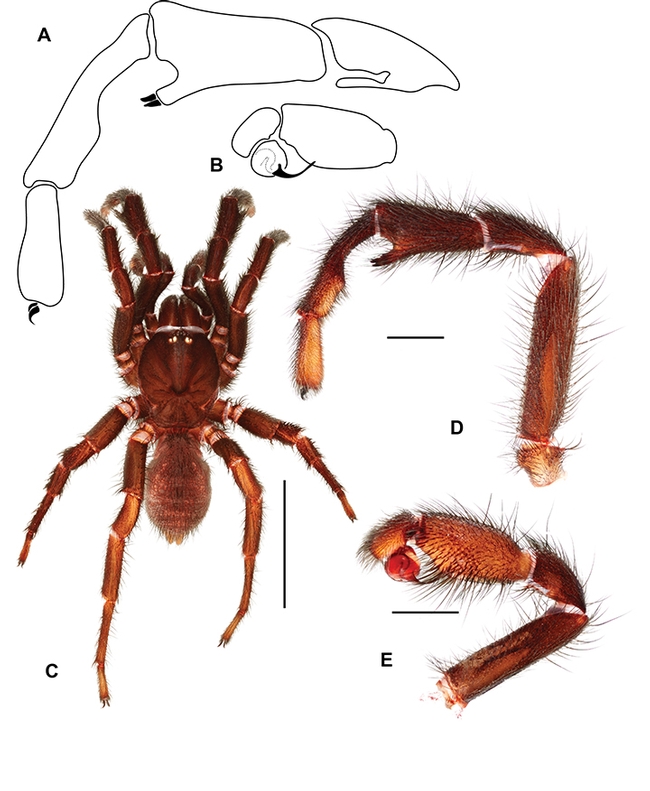
This is the male of the new genus, Cryptocteniza. (Image by Jason Bond)

UC Davis professor Jason Bond found the genus on a sandy beach at Moss Landing State Park, Monterey County. (Illustration provided by Jason Bond)
Comparison of Triform 80 and a Novel Fumigant in Fusarium Infested Soil
Introduction: With the discontinuation of methyl bromide as a possibility for pre-plant soil fumigation, we at UCCE have been very active in looking for viable alternatives. One alternative, identified by the test name TRX58, having a fairly high vapor pressure and already having certain uses in agriculture, was a good one to try.
Materials and Methods: Work was done in a field known to experience pressure from the plant pathogen Fusarium oxysporum f. sp. fragariae . Application of the test material TRX58 (550 lb per acre) and the grower check of Triform 80 (34 gal per acre) was done on October 5, 2015, shanked in followed by tarping with totally impermeable film (TIF). So as to obtain adequate fumigation and coverage, both the materials were applied in blocks 22 feet wide and 200 feet long with each block replicated twice. Two strips of 11 feet wide were placed between the fumigated plots, designated as untreated checks and not treated.
Planting of the strawberry varieties Cabrillo, Albion, Sweet Ann, San Andreas and Monterey was done on Nov 17. Plots were maintained as any other on the farm with adequate fertility and irrigation. Pick stations of 20 plants per variety x 4 replicates and commencing in April fruit harvest in all plots was done once a week and fruit weighed.
Statistical analysis is as below, and broken up into two halves (April + May) and then also given as a total.
Discussion: Triform 80 is indisputably the better treatment, but it is also indisputable that TRX58 is better than doing nothing, which as one can see from the photos is not wise in this sort of situation. It is also notable that variety such as San Andreas which is known to be "resistant" (actually tolerant is the better word) to Fusarium still loses a little bit more than half of its yield in unfumigated soil. There is a strong case being made here for treatment of soil to maintain good strawberry yields.
A deep bow of gratitude to Miguel Ramos for letting me do this work in his field, to Mark Curtice from Lassen Canyon Nurseries who gave us the plants, and then to Trical who did the fumigation.
People should realize that without the efforts of all these people working together, we would be doing very little novel fumigation research right now.
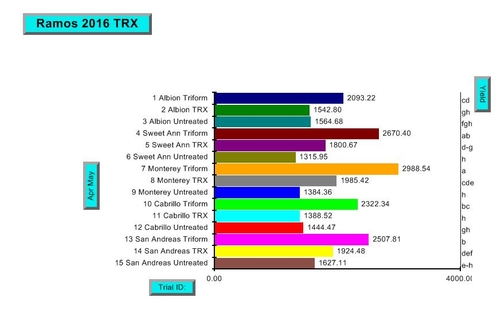
Statistical summary in 10 lb boxes per acre for first two months of study. Click on image to embiggen.
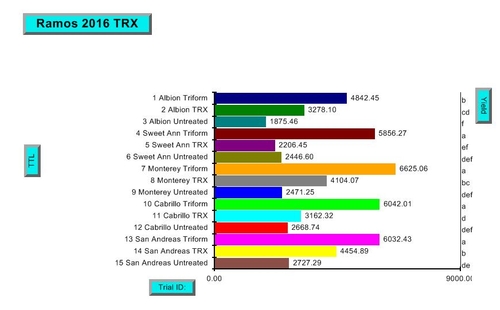
Statistical summary in 10 lb boxes per acre for total harvest. Click on image to embiggen.
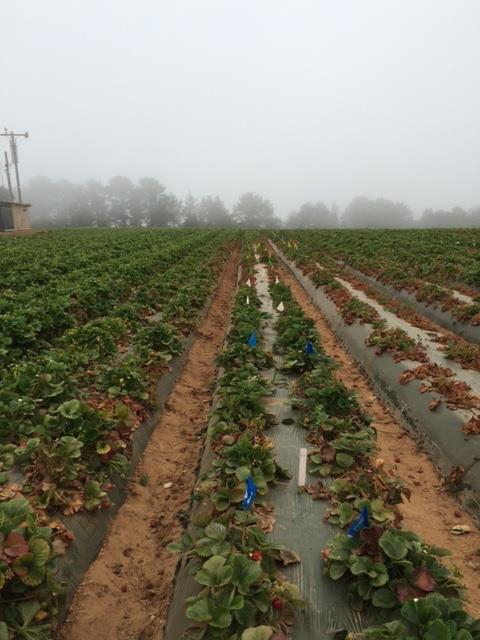
June 29, 2016. Untreated control.
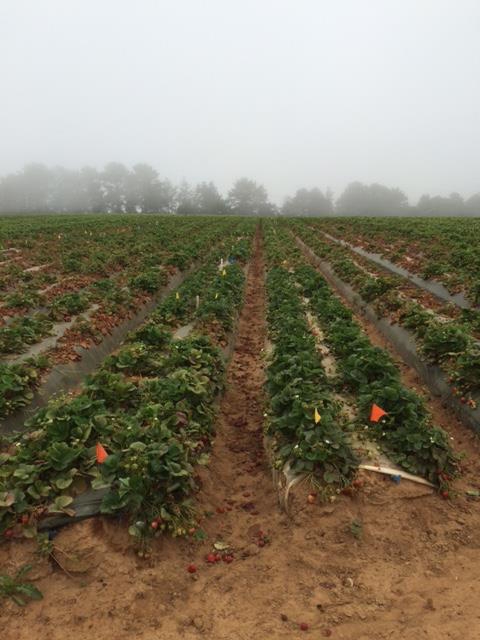
June 29, 2016. TRX treated plot.
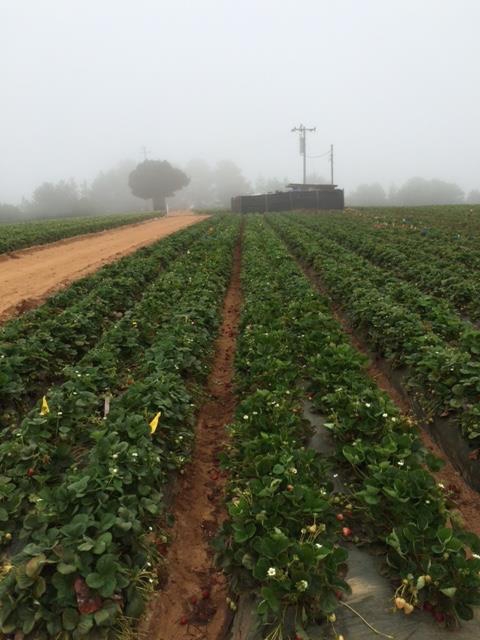
June 29, 2016. Triform 80 treated plot.

Sept 3, 2016. Monterey in untreated control.
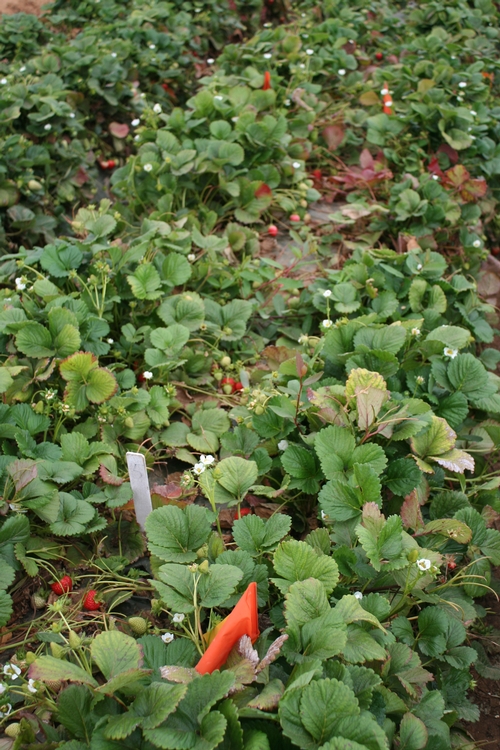
Sept 3, 2016 Monterey in Triform 80 treated plot.
Modifying the Nutritional Guidelines for Nitrogen for the Strawberry Variety ‘Monterey'
The question has come up more than a few times from industry participants on how to adjust nitrogen (N) inputs for strawberry varieties more productive and of larger plant size than Albion for which the original DRIS study was done.
Simple math says one could just increase simply N uptake estimate to cover the added fruit and bigger plant, so if Monterey produces 20% more fruit, and is that much larger a plant, one just adds 20% more nitrogen to the standard annual fertility program to make up the difference. However, as simple as this math may seem, it could quite possibly be incorrect, since it is not at all unknown that different strawberry varieties have variations in N content in the fruit and leaves.
The work to determine N content of Monterey compared to that of Albion was done over two samplings (one in early May, the other mid-July) of five fields of Albion and five fields of Monterey. We found that Monterey had marginally higher N concentrations in both the leaves (Table 1) and the fruit (Table 2) on both sample dates. An evaluation of plant size, without fruit, found that Monterey also ran about 20% larger than Albion from the five fields sampled.
From this information, we can say that N uptake is at least as high in Monterey as in Albion per unit of plant growth. That is to say, if a grower expects and has experienced 20-25% increases in fruit yield with Monterey over that of Albion, then the amount of N uptake to support that level of productivity will also be 20-25% higher than for Albion.
We need to be careful here however. This is not a call for growers of Monterey to automatically increase their N fertilizer additions by 25%. If a grower is finding his or her seasonal practices in the lower half of typical grower practice, then an increase in nitrogen application could be tested, but if a grower is already using a lot of N, say above 250 lbs per acre, then that might be enough to absorb the higher N requirement of Monterey.
Table 1: Nitrogen (N) concentrations in dry leaves
|
Variety |
4-5 May |
12-15 July |
|
Monterey |
3.02 % |
2.71 % |
|
Albion |
2.81 % |
2.44 % |
Table 2: Nitrogen (N) concentrations in dried fruit
|
Variety |
4-5 May |
12-15 July |
|
Monterey |
1.28 % |
1.06 % |
|
Albion |
1.22 % |
0.93 % |
Many thanks to the growers who participated in this study, and generously allowed me to tear plants out of their fields for the plant size sampling.

